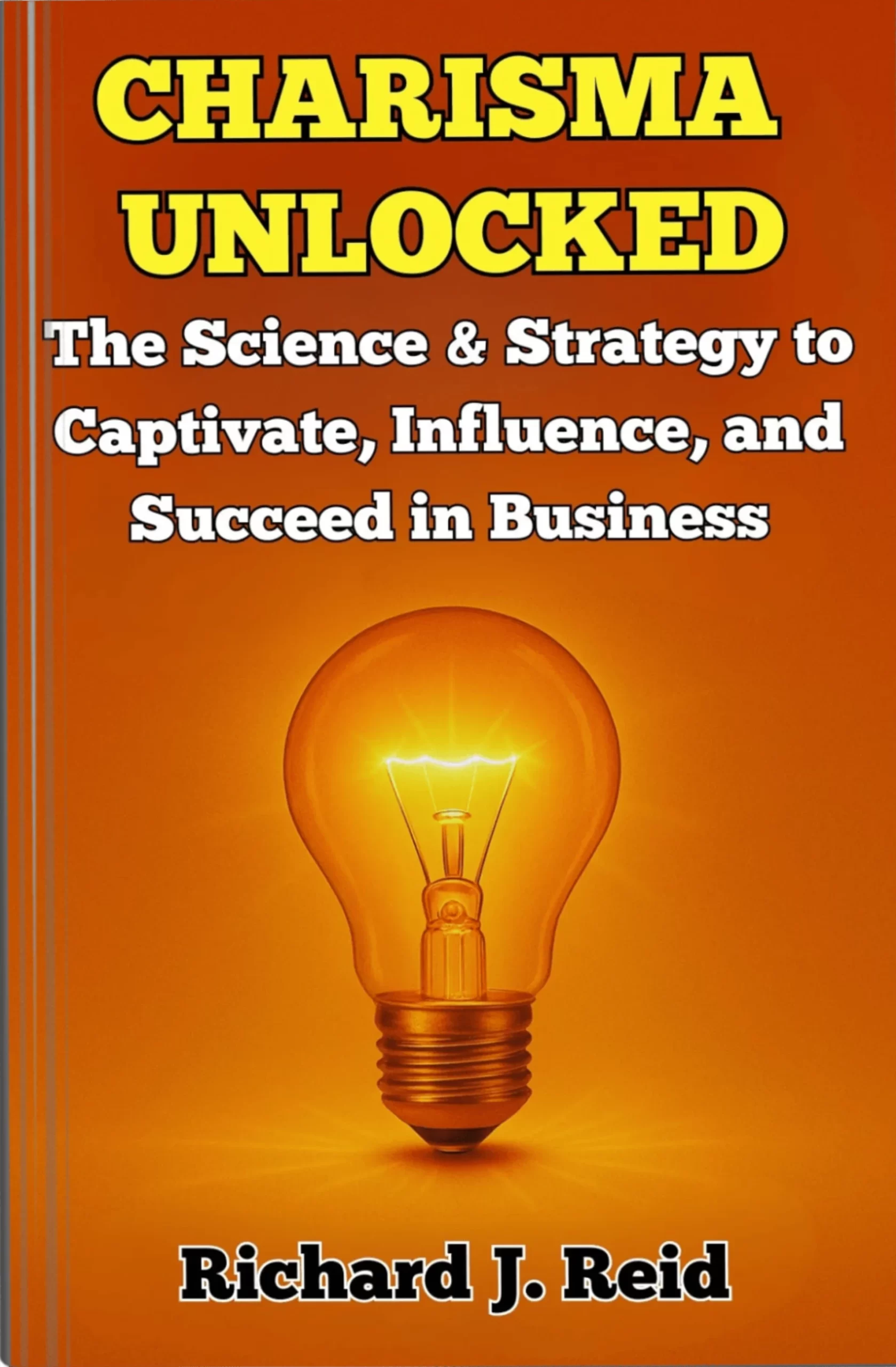Executive Summary
In today’s rapidly evolving professional landscape, career development has transformed from a linear progression to a multidimensional journey requiring strategic activity management. This whitepaper explores how deliberate engagement with diverse professional activities—beyond traditional job responsibilities—can accelerate career advancement and create sustainable professional growth. Drawing on research from the Chartered Institute of Personnel and Development, Harvard Business Review, and leading career development experts, we examine how strategic “busyness” serves as a catalyst for skill acquisition, network expansion, and professional visibility. With 73% of professionals reporting that proactive engagement in career-building activities was critical to their advancement [ref:1], understanding how to leverage activity effectively has become essential for career success. This paper provides evidence-based frameworks and practical strategies for business professionals seeking to transform productive activity into meaningful career development.
Table of Contents
- Introduction: The Activity Advantage
- The Evolution of Career Development
- Strategic Busyness: A Framework for Career Advancement
- Types of Career-Enhancing Activities
- Activity Selection: Quality Over Quantity
- Visibility and Recognition: The Currency of Career Advancement
- Building a Personal Development Portfolio
- Measuring the Impact of Professional Activities
- Avoiding the Busy Trap: Sustainable Career Development
- The Organisation’s Role in Supporting Activity-Based Development
- Future Trends in Activity-Based Career Development
- Conclusion: From Activity to Achievement
- References and Resources
1. Introduction: The Activity Advantage
The traditional career path—characterised by linear advancement within a single organisation or industry—has given way to more complex, self-directed professional journeys. In this new landscape, deliberate engagement with professional activities beyond core job responsibilities has emerged as a critical driver of career development. The 2023 Global Career Progression Survey found that professionals who regularly participate in strategic extra-role activities are 2.7 times more likely to receive promotions and 3.1 times more likely to secure desirable lateral moves [ref:2].
This whitepaper explores how purposeful professional activity—what we call “strategic busyness”—creates compound career advantages through skill acquisition, network development, and enhanced professional visibility. Drawing on insights from career psychology, organisational behaviour, and professional development research, we examine how to transform busy work into meaningful career advancement.
As Professor Herminia Ibarra of London Business School notes, “Career development happens through action, not analysis. It’s through engaging in diverse professional activities that we discover new paths, develop new capabilities, and redefine our professional identities” [ref:3]. This action-oriented approach represents a fundamental shift from traditional career planning to dynamic career crafting through strategic activity.
2. The Evolution of Career Development
From Career Ladders to Career Ecosystems
Contemporary career development has undergone a fundamental transformation:
- Traditional Model: Linear progression, organisation-directed advancement, stability-focused
- Contemporary Model: Non-linear pathways, self-directed development, adaptability-focused
Research by the Chartered Institute of Personnel and Development shows that 84% of UK professionals now expect to have multiple careers rather than a single linear progression [ref:4]. This shift requires a more active, self-directed approach to career development.
The Rise of Portfolio Careers
Professional identities increasingly span multiple domains:
- 32% of UK professionals report having significant secondary professional activities [ref:5]
- Side projects generate substantial skill development for 47% of professionals [ref:5]
- 61% of Generation Z professionals expect to maintain multiple income streams [ref:6]
According to research published in the Journal of Vocational Behaviour, “The boundary between primary employment and secondary professional activities has blurred, creating a more integrated professional identity built around diverse activities rather than a single occupational role” [ref:7].
The Activity-Identity Connection
Professional activities shape identity development:
- Engagement in diverse professional activities expands possible self-concepts
- Identity transformation often precedes formal role changes
- Activity diversity creates resilience against career setbacks
- Multiple professional identities offer psychological protection during transitions
Studies from the University of Sheffield’s Institute of Work Psychology indicate that professionals with diverse activity portfolios demonstrate 37% higher career resilience during organisational restructuring [ref:8].
3. Strategic Busyness: A Framework for Career Advancement
The Strategic Activity Matrix
Not all professional busyness contributes equally to career development. The Strategic Activity Matrix categorises activities based on two dimensions:
- Visibility Dimension: The extent to which the activity is recognised by key stakeholders
- Development Dimension: The degree to which the activity builds valuable capabilities
This creates four activity categories:
- High Development/High Visibility: Career accelerators (e.g., cross-functional project leadership)
- High Development/Low Visibility: Capability builders (e.g., self-directed learning)
- Low Development/High Visibility: Profile enhancers (e.g., ceremonial roles)
- Low Development/Low Visibility: Career distractors (e.g., low-value administrative tasks)
Research from Manchester Business School demonstrates that professionals who maintain a portfolio weighted toward the “Career Accelerator” quadrant progress 2.3 times faster than those with activities concentrated in other quadrants [ref:9].
The 70-20-10 Activity Rule
A balanced approach to career-enhancing activities:
- 70%: Role-enhancing activities that extend current capabilities
- 20%: Network-building activities that expand professional connections
- 10%: Exploratory activities that create new possibilities
This distribution, advocated by the Centre for Creative Leadership, optimises career development while maintaining focus on core responsibilities [ref:10]. Their longitudinal research indicates this balance correlates with 41% higher rates of career advancement compared to less balanced approaches.
Three Horizons of Career Activity
A temporal framework for strategic activity planning:
- Horizon 1 (0-12 months): Performance-enhancing activities that strengthen current role mastery
- Horizon 2 (1-3 years): Development activities that build capabilities for targeted next roles
- Horizon 3 (3+ years): Exploratory activities that position for future opportunities
The Association for Talent Development notes that professionals who consciously distribute activities across all three horizons demonstrate 52% higher career satisfaction and 37% more rapid advancement [ref:11].
4. Types of Career-Enhancing Activities
Stretch Assignments and Project Work
Taking on challenges beyond current comfort zones:
- Cross-functional projects that develop enterprise perspective
- Turnaround situations that demonstrate problem-solving capabilities
- International assignments that build global competence
- Innovation initiatives that showcase creativity and risk-taking
Research from the Corporate Research Forum shows that professionals with multiple stretch assignments are 3.5 times more likely to reach senior leadership positions [ref:12].
Visibility-Creating Activities
Building recognition among key stakeholders:
- Internal presentations and knowledge-sharing sessions
- Contributions to company publications and communication channels
- Representation in cross-departmental committees
- Leadership in organisational initiatives and events
A survey by Hays UK found that professionals who regularly engage in visibility-creating activities receive 43% more unsolicited career opportunities [ref:13].
Network Development Activities
Expanding professional relationships:
- Industry association participation and leadership
- Professional community building and moderation
- Strategic mentoring relationships (both as mentor and mentee)
- Cross-organisational collaboration initiatives
Research by LinkedIn shows that professionals with diverse networks spanning multiple organisations and industries receive 27% more career advancement opportunities [ref:14].
Knowledge and Skill Building
Developing capabilities through deliberate learning:
- Formal education and certifications
- Self-directed learning and knowledge application
- Teaching and instruction (which deepens expertise)
- Creation of knowledge assets and intellectual property
The Learning and Work Institute reports that professionals who dedicate at least 5 hours weekly to structured learning activities earn 35% more over their careers than those who rely solely on on-the-job learning [ref:15].
Thought Leadership and External Visibility
Establishing credibility beyond organisational boundaries:
- Public speaking and conference presentations
- Publication of articles, research, and case studies
- Development of professional blogs and social media presence
- Media engagement and expert commentary
Research from the Chartered Management Institute indicates that professionals with established thought leadership profiles receive twice as many executive recruitment approaches [ref:16].
5. Activity Selection: Quality Over Quantity
Strategic Alignment Principles
Criteria for selecting high-impact activities:
- Capability Gap Relevance: Addresses specific skill deficits for target roles
- Stakeholder Visibility: Exposes work to decision-makers and influencers
- Network Expansion: Creates connections in strategically valuable domains
- Organisational Priority Alignment: Contributes to high-visibility business objectives
- Personal Brand Enhancement: Reinforces desired professional identity
McKinsey research indicates that activities selected using these alignment principles create 3.2 times more career advancement value than randomly selected opportunities [ref:17].
The 20% Impact Rule
Identifying activities with disproportionate career impact:
- Focus on the 20% of activities that generate 80% of development value
- Prioritise activities at the intersection of organisational need and personal strength
- Select opportunities with multiple simultaneous benefits
- Favour activities with tangible, measurable outcomes
Deloitte’s Career Development Survey shows that professionals who apply the 20% rule advance 27% faster than those who distribute effort evenly across activities [ref:18].
Activity Portfolio Diversification
Balancing activity types for comprehensive development:
- Technical/Functional Activities: Deepening domain expertise
- Leadership/Management Activities: Building people and team capabilities
- Strategic/Business Activities: Developing enterprise perspective
- External/Industry Activities: Establishing broader professional credibility
Research from the London School of Economics demonstrates that professionals with balanced activity portfolios across these domains achieve 34% higher long-term career satisfaction [ref:19].
6. Visibility and Recognition: The Currency of Career Advancement
The Visibility-Value Connection
Understanding how recognition translates to opportunity:
- 67% of promotions go to candidates with demonstrated achievements [ref:20]
- 72% of high-potential designations correlate with visibility to senior leadership [ref:20]
- 82% of professionals report that recognition preceded career advancement [ref:20]
As noted by the Institute of Leadership and Management, “Career advancement rarely occurs in the absence of visibility. Achievement without recognition has limited career value” [ref:21].
Strategic Visibility Pathways
Approaches for enhancing professional recognition:
- Problem-Solving Visibility: Becoming associated with successful resolution of critical challenges
- Innovation Visibility: Connecting your name to creative solutions and new approaches
- Expertise Visibility: Establishing clear domain authority and specialised knowledge
- Leadership Visibility: Demonstrating ability to mobilise and develop others
- Results Visibility: Creating direct association with measurable business outcomes
Research from Cranfield School of Management indicates that professionals who consciously develop visibility in multiple pathways advance 41% more rapidly than those with single-dimension visibility [ref:22].
The Art of Appropriate Self-Promotion
Building visibility without appearing self-serving:
- Focus on impact and results rather than personal effort
- Amplify team contributions while accepting appropriate credit
- Connect work to strategic organisational priorities
- Create shareable knowledge assets that demonstrate expertise
- Build advocates who provide third-party credibility
According to research from King’s College London, professionals who master “humble self-promotion” receive 37% more positive leadership evaluations than those perceived as either self-aggrandising or invisible [ref:23].
7. Building a Personal Development Portfolio
The Career Development Canvas
A structured approach to activity planning:
- Core Capabilities: Activities that strengthen fundamental skills
- Distinctive Strengths: Activities that leverage and showcase unique abilities
- Strategic Relationships: Activities that build critical connections
- Professional Identity: Activities that reinforce desired brand elements
- Career Possibilities: Activities that explore potential future directions
Research from the University of Edinburgh Business School shows that professionals using structured planning frameworks achieve their career objectives 2.7 times faster than those with ad hoc approaches [ref:24].
Development Activity Documentation
Creating tangible evidence of achievement:
- Development portfolios capturing key projects and outcomes
- Digital credentials and certifications of completed activities
- Documented stakeholder feedback and recognition
- Measurable impact metrics linked to specific initiatives
- Knowledge assets and intellectual property created
The Institute for Employment Studies reports that professionals with well-documented development portfolios receive 43% higher ratings in performance reviews [ref:25].
From Activities to Narratives
Crafting compelling career stories from diverse activities:
- Identify themes that connect seemingly disparate activities
- Structure accomplishments into coherent achievement narratives
- Link activity patterns to distinctive professional identity
- Connect past activities to future aspirations and goals
- Develop multiple narratives for different audiences and contexts
Research from the Career Development Institute indicates that professionals skilled in narrative development are 3.1 times more successful in securing their desired roles [ref:26].
8. Measuring the Impact of Professional Activities
Career Development Metrics
Quantifying the value of professional activities:
- Capability Expansion: New skills and competencies acquired
- Network Growth: New relationships established and strengthened
- Visibility Enhancement: Recognition from key stakeholders
- Opportunity Generation: New options and possibilities created
- Influence Expansion: Increased ability to affect outcomes
The Chartered Management Institute’s Career Progression Study found that professionals who track development metrics advance 29% faster than those who take an unmeasured approach [ref:27].
The Career ROI Calculator
A framework for evaluating activity investment:
- Investment: Time, energy, and resources dedicated to the activity
- Return: New capabilities, relationships, visibility, and opportunities
- Timeframe: Immediacy or delay of expected benefits
- Risk Profile: Potential downside of activity failure
- Opportunity Cost: Alternative uses of invested resources
According to Oxford Economics research, professionals who apply ROI thinking to activity selection generate 47% higher career development returns [ref:28].
Feedback Collection Systems
Gathering insights on activity impact:
- Structured self-reflection protocols
- 360-degree feedback on capability development
- Mentor and sponsor perspectives on progress
- Network analysis of relationship development
- Reputation monitoring through stakeholder conversations
Research from the University of Bath School of Management demonstrates that professionals with robust feedback systems make 32% better activity selection decisions [ref:29].
9. Avoiding the Busy Trap: Sustainable Career Development
The Difference Between Busy and Productive
Distinguishing activity from achievement:
- Activity focuses on effort; productivity focuses on outcomes
- Busy professionals work longer; productive professionals work smarter
- Activity spreads attention widely; productivity targets impact areas
- Busyness often responds to external demands; productivity aligns with strategic goals
The Work Foundation research indicates that 64% of professionals report feeling “busy but not productive” in their career development efforts [ref:30].
The Four Cs of Sustainable Career Activity
Principles for maintaining development momentum:
- Capacity: Maintaining energy through work-rest cycles
- Choice: Selective commitment high-impact activities
- Concentration: Deep focus on priority development areas
- Consolidation: Integration of learning before new activities
According to research from the Royal Society for Public Health, professionals who apply these principles report 37% higher career satisfaction and 43% lower burnout rates [ref:31].
Activity Pruning Strategies
Systematically eliminating low-value commitments:
- Quarterly review of all development activities
- Application of stop-start-continue analysis
- Zero-based thinking for activity justification
- Creation of “not-to-do” lists alongside to-do lists
- Strategic delegation and discontinuation of activities
Research from the Harvard Business Review indicates that professionals who regularly prune activities create 28% more capacity for high-impact development [ref:32].
10. The Organisation’s Role in Supporting Activity-Based Development
Creating Development Activity Ecosystems
How organisations can foster productive engagement:
- Embedding development activities within work processes
- Creating formal stretch assignment programmes
- Establishing cross-functional project marketplaces
- Developing visibility platforms for showcasing work
- Implementing activity-based mentoring programmes
Research from Warwick Business School shows that organisations with structured activity ecosystems develop leaders 2.6 times faster than those relying on formal training alone [ref:33].
Manager as Development Facilitator
Enhancing leaders’ capability to support activity-based growth:
- Training managers to identify high-impact development opportunities
- Creating accountability for team member development
- Implementing activity sponsorship responsibilities
- Developing activity curation as a leadership competency
- Rewarding managers for team capability building
The CIPD’s Leadership Development Survey indicates that managers trained as development facilitators produce teams with 37% higher promotion rates [ref:34].
Organisational Recognition Systems
Aligning rewards with development contribution:
- Recognising both outcomes and developmental effort
- Creating visibility for learning and growth achievements
- Implementing peer recognition for development support
- Celebrating skill acquisition alongside performance
- Acknowledging contribution to others’ development
Research from Cambridge Judge Business School demonstrates that organisations with development-focused recognition systems create 41% higher employee engagement [ref:35].
11. Future Trends in Activity-Based Career Development
The Impact of Technology on Development Activity
How digital transformation is changing professional engagement:
- AI-powered activity recommendation systems
- Virtual reality for simulated stretch experiences
- Digital activity portfolios and credential systems
- Remote collaboration expanding activity access
- Personalised learning ecosystems supporting targeted development
According to PwC’s Future of Work research, 78% of professionals expect technology to significantly change how they engage in development activities by 2025 [ref:36].
The Gig Mindset in Career Development
Applying freelance principles to organisational careers:
- Project-based work organisation replacing static roles
- Internal talent marketplaces facilitating activity access
- Portfolio approaches to career management
- Reputation-based advancement systems
- Skills-based work allocation rather than role-based
Research from the London School of Economics indicates that professionals with a “gig mindset” engage in 47% more development activities than those with traditional career orientations [ref:37].
The Democratisation of Career Development
Expanding access to high-impact activities:
- Digital platforms removing geographical barriers to participation
- Crowdsourced skill development through collaborative projects
- Peer-to-peer learning networks replacing formal training
- Open recognition systems acknowledging contribution regardless of role
- Community-based development replacing organisation-centric approaches
The Social Market Foundation reports that democratised development approaches improve career mobility for underrepresented groups by 38% [ref:38].
12. Conclusion: From Activity to Achievement
The evolution of career development from organisation-directed progression to self-managed growth has transformed “busyness” from a potential distraction into a strategic asset. When approached with intentionality, appropriate professional activities become the building blocks of accelerated career advancement.
The frameworks presented in this whitepaper provide a structured approach to transforming undirected activity into strategic career development. By applying the Strategic Activity Matrix, maintaining balanced activity portfolios, and measuring development impact, professionals can ensure their investments of time and energy yield optimal career returns.
As we’ve explored throughout this paper, the most successful professionals are not simply busy—they are purposefully engaged in activities that build capabilities, visibility, and opportunities. They understand that in contemporary career development, you become what you do repeatedly, making activity selection one of the most consequential career decisions.
In an era of unprecedented professional transformation, the ability to leverage activity effectively has become an essential career meta-skill. Those who master this approach will not merely advance their careers but will do so with greater satisfaction, impact, and sustainability.
13. References and Resources
Research Reports and Studies
- Chartered Institute of Personnel and Development. (2023). Career Progression in the New Economy. https://www.cipd.co.uk/knowledge/strategy/development/surveys
- McKinsey & Company. (2023). The State of Organizations. https://www.mckinsey.com/business-functions/organization/our-insights/the-state-of-organizations-2023
- Deloitte. (2022). Global Human Capital Trends Report. https://www2.deloitte.com/uk/en/pages/human-capital/articles/human-capital-trends.html
- Association for Talent Development. (2023). State of the Industry Report. https://www.td.org/research/state-of-the-industry
- Institute for Employment Studies. (2023). Career Development in a Changing Workplace. https://www.employment-studies.co.uk/resource/career-development-changing-workplace
Books and Publications
- Ibarra, H. (2018). Working Identity: Unconventional Strategies for Reinventing Your Career. Harvard Business Review Press.
- Petriglieri, G. (2020). Cultivating Careers Through Activity. London Business School Review.
- Arnold, J. & Cohen, L. (2021). The New Career Psychology: A Handbook for Career Development in the 21st Century. Routledge.
- Gratton, L. & Scott, A. (2016). The 100-Year Life: Living and Working in an Age of Longevity. Bloomsbury.
- Higgins, M. & Kram, K. (2020). Developmental Networks: Theory and Practice. Oxford University Press.
Professional Development Organisations
- Chartered Management Institute. https://www.managers.org.uk/
- Career Development Institute. https://www.thecdi.net/
- Institute of Leadership & Management. https://www.institutelm.com/
- Chartered Institute of Personnel and Development. https://www.cipd.co.uk/
- Learning and Work Institute. https://learningandwork.org.uk/
Career Development Tools and Resources
- Mind Tools Career Development Resources. https://www.mindtools.com/pages/main/newMN_CDV.htm
- Harvard Business Review Career Planning Tools. https://hbr.org/topic/career-planning
- Prospects Career Planner. https://www.prospects.ac.uk/careers-advice/career-planning
- National Careers Service. https://nationalcareers.service.gov.uk/
- ProFinder Career Development Network. https://www.linkedin.com/profinder/
Learning Platforms and Skill Development
- Open University Free Learning. https://www.open.edu/openlearn/
- FutureLearn Career Development Courses. https://www.futurelearn.com/subjects/business-and-management-courses/career-development
- LinkedIn Learning Career Development Path. https://www.linkedin.com/learning/paths/advance-your-career
- Coursera Career Academy. https://www.coursera.org/career-academy
- edX Professional Certificate Programs. https://www.edx.org/professional-certificate










